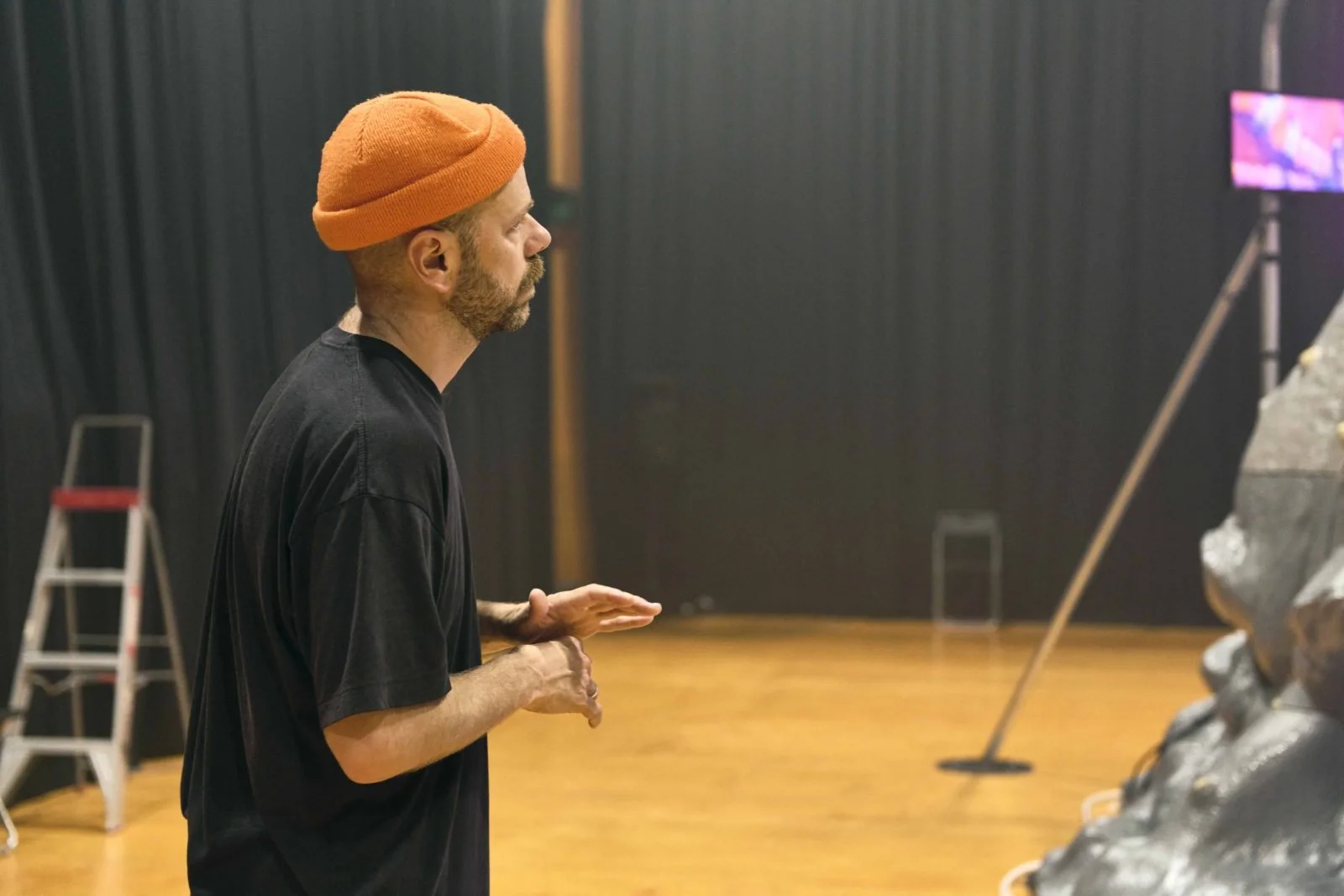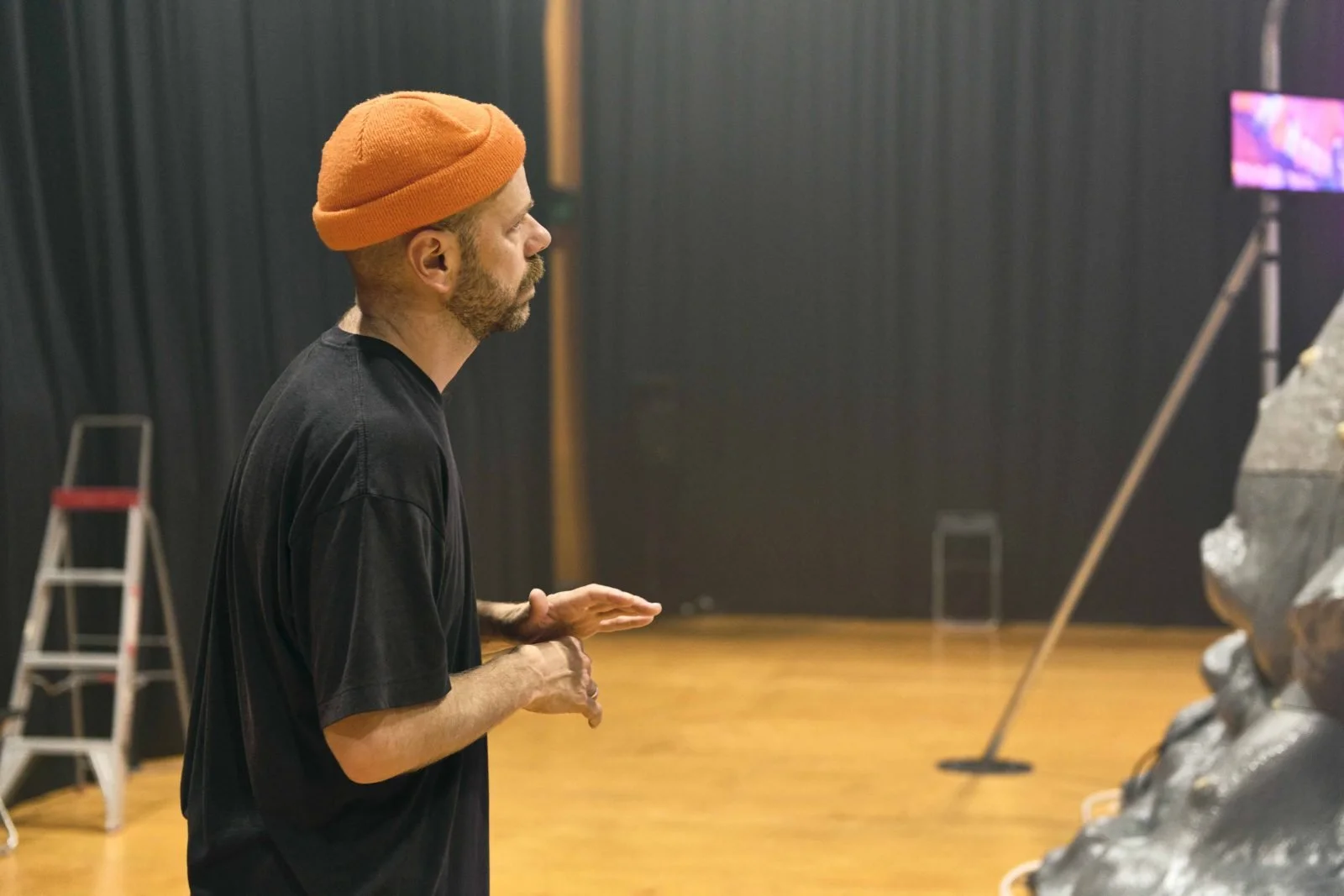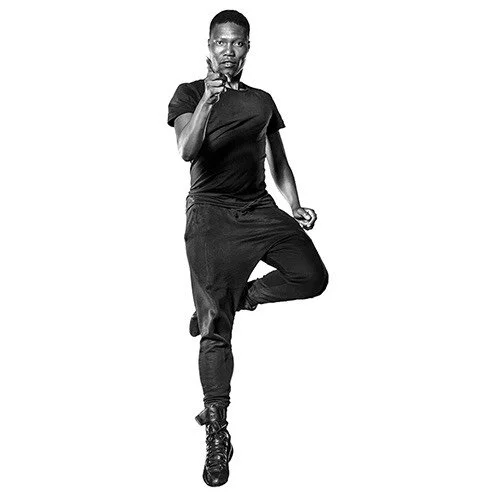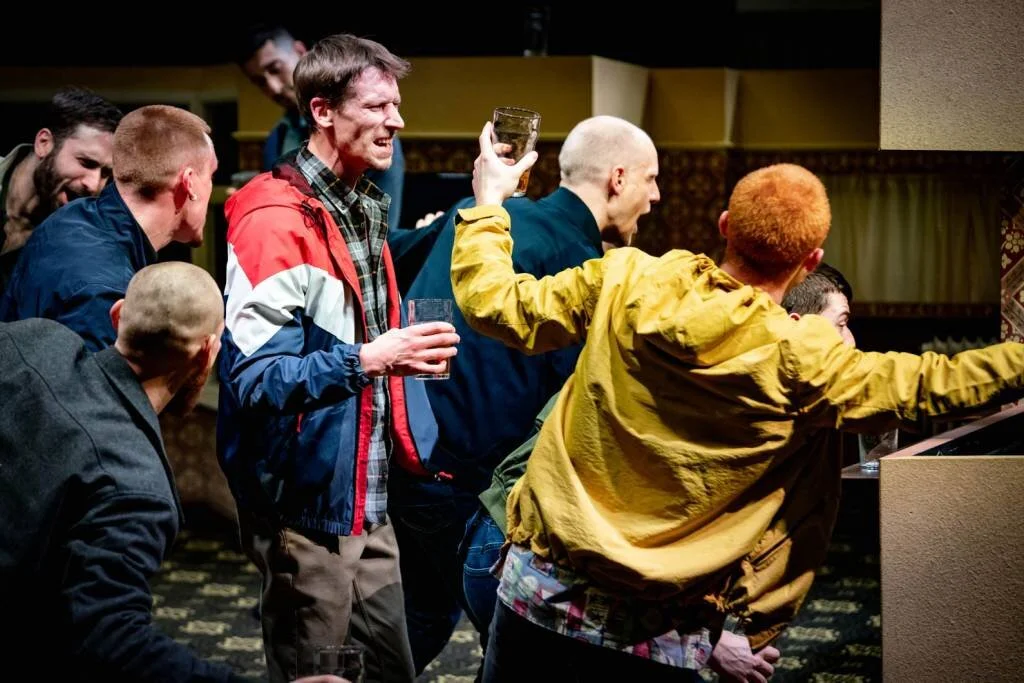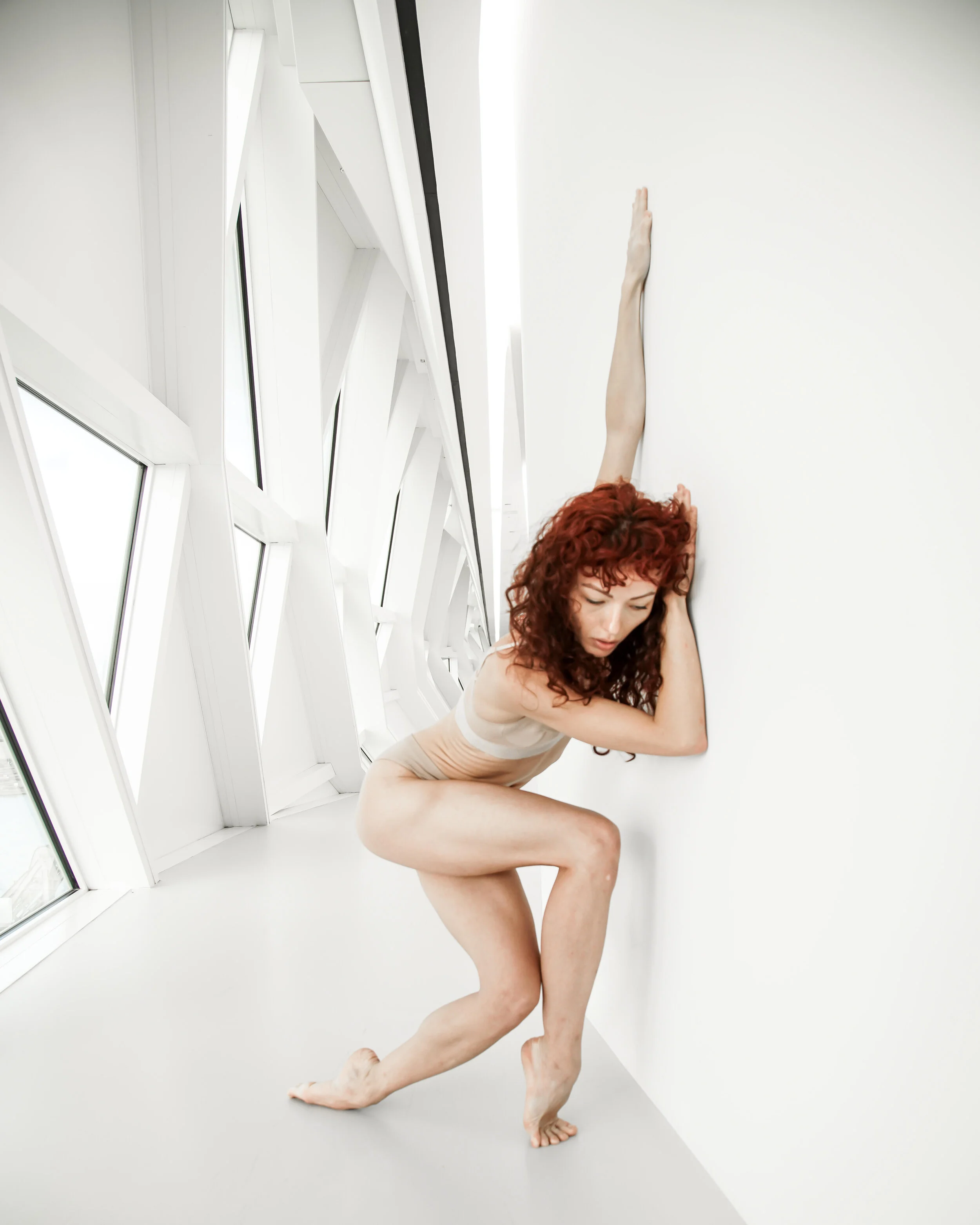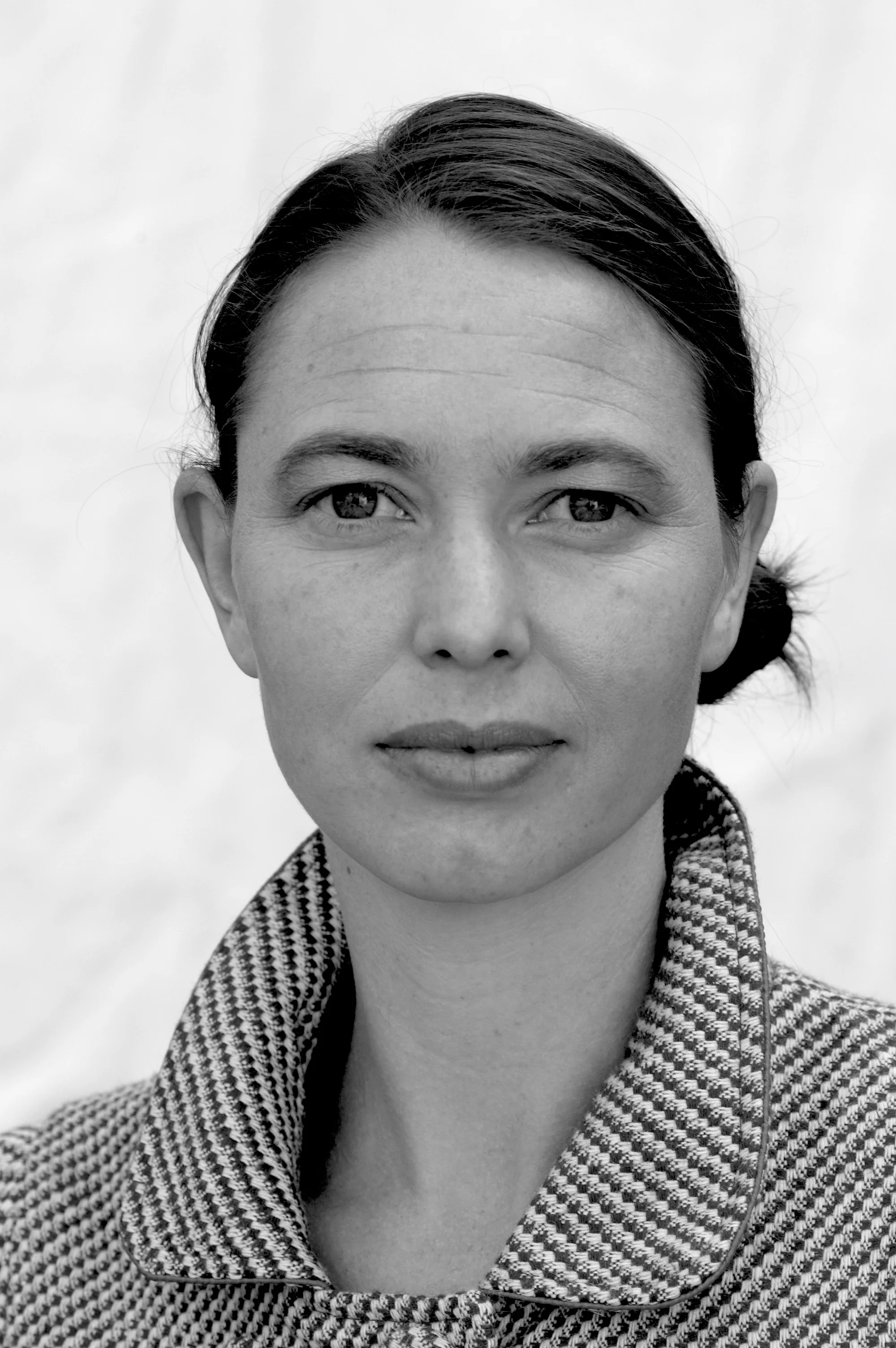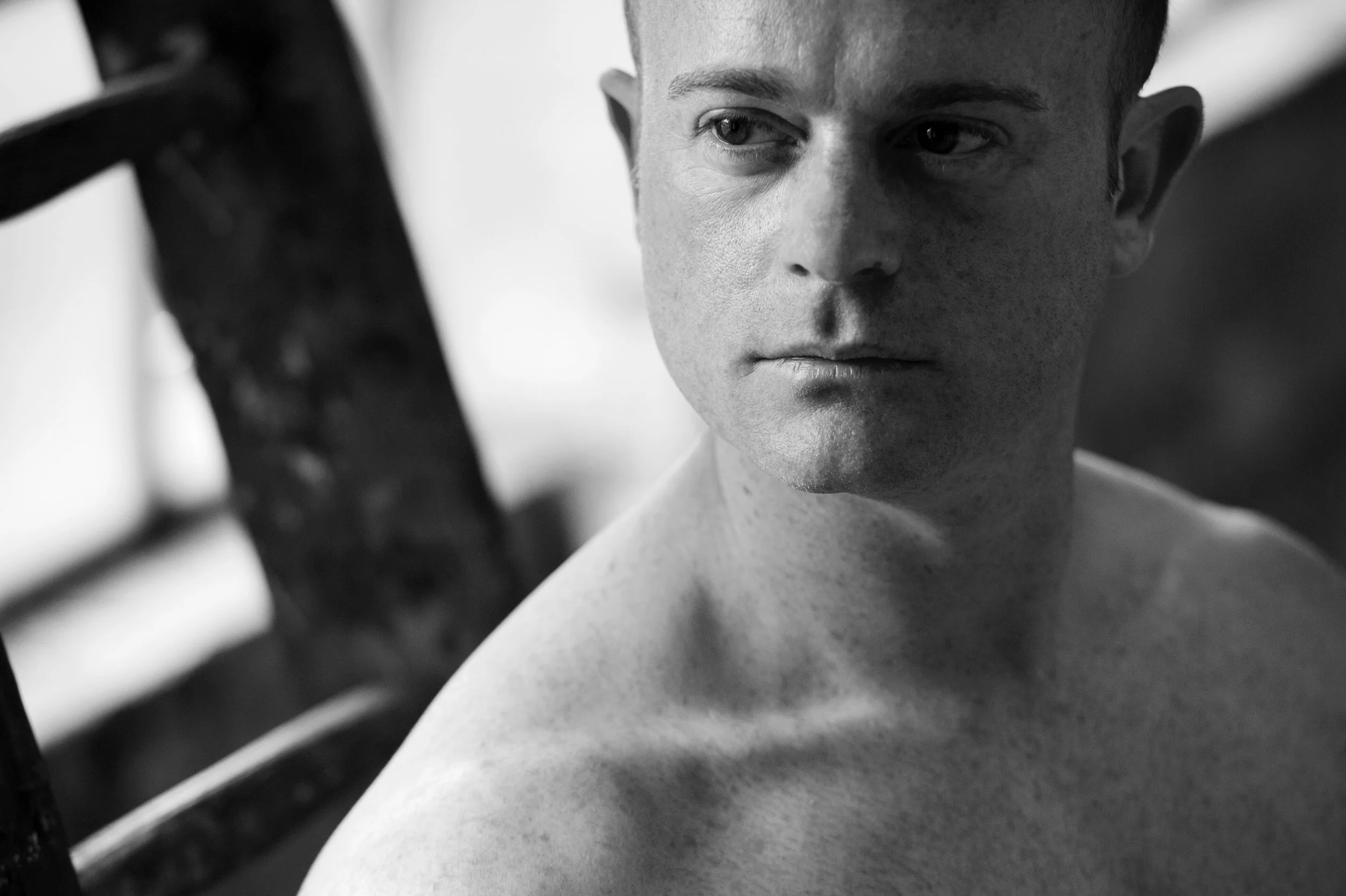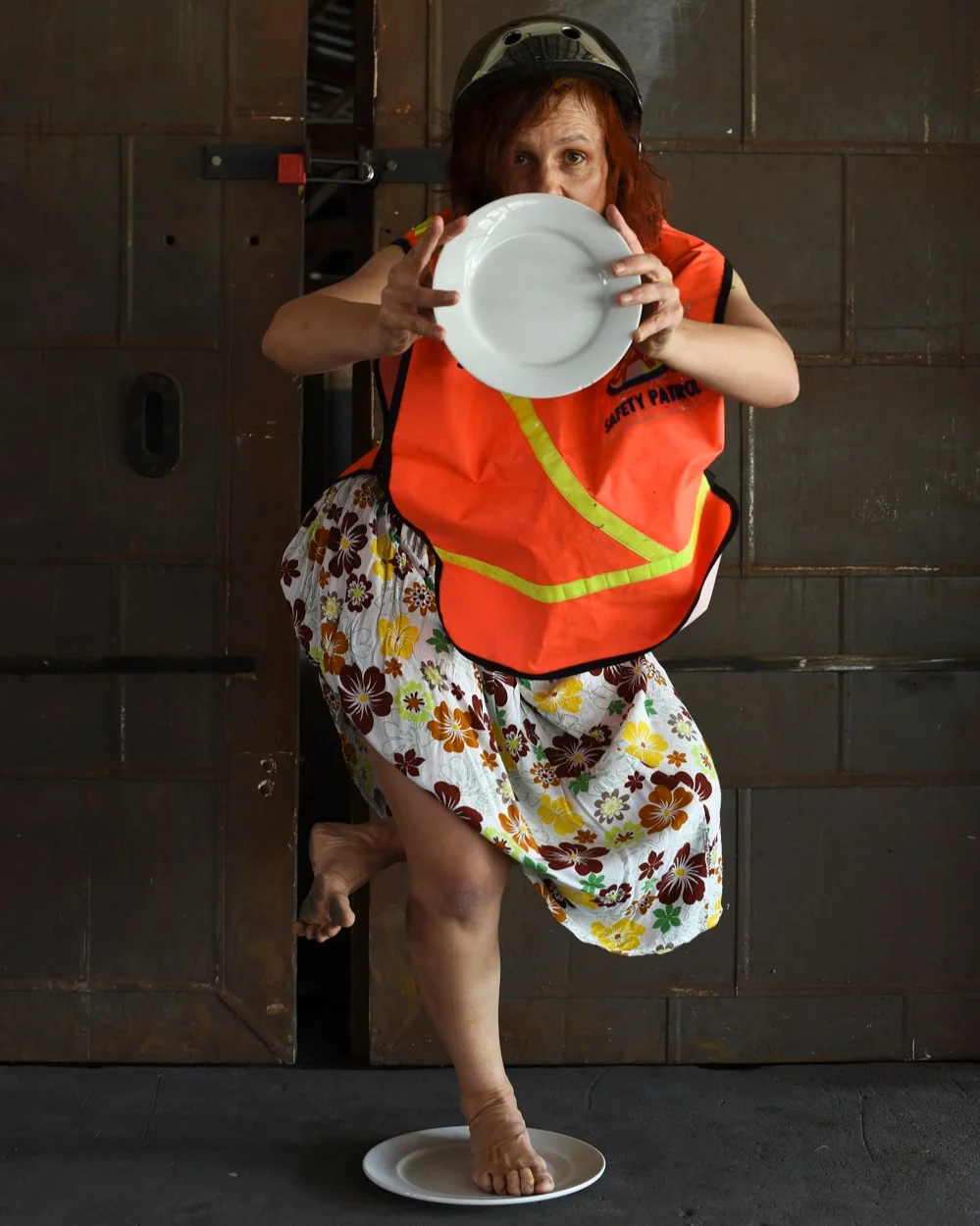This transcript is from an interview that was first published on 17th of October 2022, part of a collaboration with The Australian Ballet and their DanceX Season. This transcript has been edited slightly to help with clarity, the audio of this episode and more information can be found here. The interview starts by asking Antony about where did dance start for him.
Antony: Dance for me, started when I was very young. I would say it was really connected to popular culture, mostly. So, I was born in 1978, grew up in Sydney and I suppose music videos and film, popular film, was the founding influence on me for dance. There was a bit of an explosion in the early 1980s with films related to dance. You had Breakdance, you had FlashDance, you had Beat Street, you had Footloose, you had all these movies that put dance right in the spotlight, right in the centre of popular culture.
Also, music videos had to become a very important new form of expression as well. And I think the kind of collision of visual language, art direction, storytelling and music and dance was very infectious to me. It influenced the way that I view the world and the way I was experiencing things as a child. I think as well, that early connection to movement, being so young and being interested, being kind of I mean, I wouldn't say interested in dance. it was more reactive. My body, like most children and babies even, they start moving before they make sounds. Or maybe they make sounds at the same time as they start moving. But I trace it back like that far. When I'm making dance and when I think about choreography or art, I often relate my early childhood experiences to the things that I make now as well.
ANDREW: It's quite interesting because when you do play music, children often just start dancing and moving or whatever that is. And as a lot of people get older, we well, some of us, (myself included), stop moving or kind of put up these barriers to moving. Why do you think that is? What is it that's such obviously an innate expression that all of a sudden we can't do it anymore or we feel like we can't?
ANTONY: I think there's so many factors. I feel that one of the biggest, actually, is probably that a lot of our work life, a large proportion of people's work life is spent sitting down now. We're not moving as much just in our daily lives. Walking is the first step towards dancing, I've always kind of felt. So if you're not moving between things and shifting your body, there's really kind of no potential to become expressive. I think there's so many factors, as I said, but one that I find particularly interesting is that there are conditions of the contemporary world that are physical conditions. They're literally sort of an imposed condition of the way that we engage with our body, and that's in a slightly more passive way now.
But it's a privilege, I guess, to be in a position to dedicate your time and thinking to how you're moving. It's quite topical still to talk about the pandemic, but I will. During the Pandemic, it was interesting because in Melbourne, of course, we only had the opportunity for some quite long periods of time to just, like, walk around our local block. So as an artist, you're looking for any opportunity, in a way to find an opportunity or a moment for artistic thinking, expression, playfulness. I remember finding myself kind of dancing down the street around my block, which would never have happened under any other circumstances. It was the situation that we were in, it sort of forced us to view our own prism, that we live in a very different way.
I remember things feeling sharper and clearer and I had more attention to things, neighbourhood houses and gardens that I never really paid attention to before. Colours seemed brighter, everything looked kind of clearer and sharper. It was really strange. And I think because we're thinking about the destination all the time, if we're travelling to work or we're travelling to some event or going to see someone, you know, often the in-between journey is a little bit of a blur.
ANDREW: It must have been such a strange time to be entering Chunky Move with all these plans and all this new thinking, new energy, to then to hit pause on everything. How was that feeling? Experience?
ANTONY: Yeah, it was terrible, I have to say. And there was a period of time, really a sense of mourning that this moment, this very important moment in my personal life, which of course extends into the social fabric of the culture making of a place and of a city, was going to experience this kind of pause that no one could control. It was very sad. And who knows, maybe there's a part of me that will never really recover from that.
But the new lens that we have to look through is fascinating and interesting and the mixture of what is really relevant now post Pandemic creatively. But also coupled with the effects of the Pandemic on the economic situation. What it means for the sort of sense of international community and travel and the potential to have international exchange of sharing of ideas. The sort of soft diplomacy that art had performed in the past. Even those things feel really difficult still and we're taking baby steps, really back into the world in terms of the sort of in person live experience.
I just spent some time in Dusseldorf at Tanzmesse, which is a gathering of presenters from around the globe, as well as artists and companies in dance to exchange, I think traditionally in the past it's been a space largely of a marketplace, but now, this year, it was very much about kind of commiserating as well, and just really getting an early sense of what people's capacity and what sort of nation's capacity is to bring people from very far away to visit again.
ANDREW: Yeah, and also because that whole time, like producers and creatives are used to moving ideas and things forward for some sort of culmination or some sort of moment celebration, whatever that is, in the different art forms. And then all of a sudden. In that period of time where people were unproducing and doing everything that they hadn't done before, which was cancelling things and undoing the work that was being done and taking all the steps backwards, as opposed to having that release or that moment. Which is. Yes. It does need a moment of reflection because the world hasn't gone back to normal in the same way just yet.
You're in the UK at the moment as well. Is this the first international tour since you started? And how's it going?
ANTONY: So, Chunky Move earlier in the year premiered a new work, which was a collaboration with Restless Dance Theatre, a company from Adelaide with dancers with and without disability. We've been collaborating on this work, would you believe it, since 2019. It just goes to show how significant the delays have been for getting projects up and into the world. We premiered our new work Rewards for the Tribe at Rising in the middle of 2022. And we had scheduled to have our international premier at Warwick Arts Center in Coventry quite some time before that, but it was scheduled for the end of this year. So we're here at the moment, as I said, a couple of years delayed. And it's fantastic.
It's really amazing to be travelling again with our small team, the dancers from Restless Dance Theatre and Chunky Move and a small production team. We've done a whole bunch of community engagement work and exchange with a number of other dance companies and students at the Trinity Laban Center in London. So we have really kind of squeezed everything out of it, and actually the focus in many ways has been about this additional exchange component to the travel that we're doing with some of the other companies and doing workshops with them.
In all honesty, the season itself has been really hit hard by cancellations and quite poor sales in terms of tickets, which is something that we hear across the globe. We're in conversation with other companies and other people within the industry everywhere, and we're sort of hearing the same thing everywhere. How are we getting the most value out of the situation that we're in when it might not necessarily be just about the shows and just about big full theatres and sold out houses? What's the measure of success? What's the measure of value for the people and the place that you're coming to and for ourselves. So that's been really interesting, how much more emphasis has been on the sort of interstitial activities that we've been doing around the performance.
ANDREW: Yeah. And I guess with climate change and everything, that's also a great thing as well, just to make the most of those moments. How do you think Australian dance is kind of viewed internationally? I live in the UK most of the year now, returning to Australia, but it's very interesting hearing conversations about Australian dance. I know it's not all one thing, but just be really interested to know from the conversations you're having what people are talking about.
ANTONY: Yeah. Well, I guess coming from the contemporary dance world, and having spent the last 25 years within that space, I can probably only really speak specifically on the contemporary dance landscape of that time as well. I know that in the early 2000s, we had quite a significant international presence and there was a real interest in the work from this faraway place, from a European and North American perspective, anyway. So companies like the Australian Dance Theatre and Chunky Move, Lucy Guerin Inc. and others had quite a strong presence, and then I think there's been a really interesting kind of shift with the way media is consumed and exchanged over the last ten or so years.
I think it's very easy to just have a feeling or a sense of the disposability of culture and Art. And it tends to have a very short lifespan. And so it's easy to forget what happened last year, last month, even - last week. I think the turnover of what's happening in the world is so much faster than it's ever been before. We're in a very strange time in that respect, the sense of disposability of ideas and of culture. Now, I think, in a way, because of that, there's a sense that I think we can sort of reconnect globally a bit fresh, like there are no big expectations or a sense that I think there's a lineage that we're connecting to in any way.
It feels quite new to be going out and connecting without that sense of legacy, potentially. It's weird, I suppose, but I think I don't know, it's a hard question to answer. Some artists as well are having a really strong presence. I know that it's fantastic that a lot of First Nations work is really gaining a lot of traction overseas. And it's obviously a really important time in Australia at the moment with First Nations culture really moving into the foreground in a big way. Which is fantastic and incredible and incredible to be a part of that groundswell. Be a part of helping to drive that, but also watching it around you just it's amazing.
So, Marrugeku, Joel Bray company I think both are getting really significant kind of traction overseas. I know that Stephanie Lake is also really sort of charging forward with these quite spectacular large scale works, which is really wonderful to see as well. So, yeah, I think there's an appetite there, which is amazing.
ANDREW: Can we talk a little bit about your new commission as part of DanceX and a little bit about this piece and the influences behind it?
ANTONY: So the commission for the DanceX season is a new work, a short work. It's called AB_TA_response. Quite cryptic. The AB is Australian Ballet and the TA is Token Army's response. So Token Armies was a work that I made for Chunky move in 2019. It was the first major work that I created for the company when I'd assumed the directorship of the company. It was a very large scale work for the size of the company. I guess you could say it was perhaps one of the biggest works the company's ever produced and actually manifested. Essentially the work was really about the complicated dialogue and sort of tethering of humans to the environment around them, which is largely a built environment constructed by sort of human progress I suppose.
I sort of have always had a very strong interest in taking a long historical lens to the relationship of humans to the built environment, even going as far back as pre agricultural revolution and thinking about the first tools that humans developed and picked up to sort of improve or build on their capacity. Even thinking of when you hold a stick in your hand, your arm is like that little bit longer, it's a new arm, it's a cyborg arm when you're holding a stick. This sensibility that we found greater potential through the use of tools and materials and objects.
I'm also interested in the paradox that technological development is not all good. It's produced things that have been quite detrimental. I'm interested in this kind of marriage between humans and this built environment and the difficulties we have with ever really extracting ourselves from that. We're so deeply and firmly embedded in a world in which we sort of interface with material things all the time and tools, and appliances, and door handles, and elevators and we're going in and out of buildings and we're just sort of being carried around in dialogue with all these material things. I'm interested in autonomy and control and how much self control we have in the world.
I often talk about the idea of traffic lights as a really interesting example of how we behave according to these rules that are sort of we understand them to be about safety on a very kind of basic level, but, there's something really important and incredible going on there when we all agree that when the light is green, we go and we all agree that when the light is red, we stop. It's a very powerful, simple symbol that we use to coordinate and organise billions of people to behave a certain way. Those sorts of things I just think are incredibly fascinating and so, AB_TA_response, it’s an extension of the Token Army's language and interest within that work.
The Token Army was so big, (22 performers) and there were some other living creatures in the work. There was a horse, an eagle and a dog. We really wanted to have homing pigeons in the works, to have another species of another sort of size that had a different behaviour pattern as well, but we couldn't ever do it unfortunately, we tried but we just couldn’t get there. A whole sort of range of these objects that are designed and in collaboration with costume designer Paula Levis and Creature Technology co who are based in Port Melbourne, who do a lot of incredible work with big animatronic dinosaurs for huge arena spectaculars and things like that, so we had a lot of fun developing this sort of visual language of machines and this sort of “speculative future” aesthetic.
Because the work was so large, I always had this idea that you could extract components of that work to make these smaller pieces that were responses to very particular contexts and situations and places. Before the pandemic hit, there was quite a bit of interest and excitement about this idea of a modular performance world. So from what we understand, it's a little bit like science fiction movies like Star Wars. You can have these kind of expanded universe iterations stories that are kind of yeah, we understand them to be part of that world, but they're not connected to the main story. So, we were going to pull out little bits of the work, certain machines and a smaller ensemble of dances and create a new dialogue between those elements for a new space.
We were going to do a work for Dark Mofo back in 2020. We were talking to them about a work that would occur in a park, sort of on a hill in a way. And so choreographically and physically the area of interest was in the labour of moving to defy gravity and move up this hill, taking all these objects with you. Each context sort of provides a sort of bed of opportunity for choreographic exploration and a new sense of what are the rules of this world, what are the tools of this world and what do we need to sort of further the human journey?
ANDREW: Design is a big feature of this work and a lot of your work. And I'm just wondering how, when you start creating something and that kind of process of making new work, what aspect, I guess, is the subject matter or idea? What aspect is the dialogue with the design and the creation of the design and how that speaks to space and then the bodies. Does that make sense? Like all the different elements? How do you bring that together?
ANTONY: It's a really good question and it's a really hard one to answer because it's often in sort of fits and starts. It's never usually one or the other proceeding. It tends to be sometimes it's driven by a movement vocabulary that's just very much about the dances you're working with in a vacuum with nothing around. Other times it's developing a material context and a material space with things in it that dancers are immediately integrated with or responding to. So it varies, but I would say actually it's more often than not that I'm trying to develop a visual language and a world that is then populated by the dancers after so that they're entering this world and we have all the time that we can manage to get to develop this sort of bespoke choreographic language that is in relation to something that's already been designed. Which - it was a hard thing for many years to pitch that idea.
People wanted to know what the piece was going to be choreographically. They wanted to know what the movement was going to be, how it was going to feel, what was going to look like. And it was quite difficult to sort of pitch for funding, I suppose, to develop a sort of scenography first. It was not an easy thing to argue for. So, it took a long time to sort of convince or try and help people to understand that it was sort of integral to the work that we had a world that was constructed ahead of time, but that is usually the way it kind of plays out.
ANDREW: Thank you so much. We talked a little bit about, obviously the blip of COVID and that moment of time and you starting at Chunky Move. I'm just wondering, has your vision for the company changed during that time? Or, is your vision the same and are you happy to share a little bit of what your vision for the company is?
ANTONY: One thing I have to admit is that after around 17 years as an independent artist, I went into the Directorship of Chunky Move pretty naive. I really imagined in a way, that it was a space in which I'm going to get to do whatever I want. It's almost like it's kind of like the cherry on the cake or the icing on the cake, I should say. It provides really incredible opportunities creatively, but at the same time, we perform a very particular kind of role in which we do have great responsibility to the whole sector, actually. As one of the larger companies in Victoria it’s up to us to ensure that the art form is visible, present, engages with the cultural context that we're in, the social context that we're in. Which is something that I suppose in the past I probably felt a little bit more isolated from and quite a creative hermit. I was less involved in thinking about that bigger picture of culture and how it connects with people.
How can I say this? There’s not a lot about the vision for the company that we came in with that has changed in terms of the core values that we have. What we want the company to be able to do is to produce really incredible work that you're not going to see anywhere else. We want the company itself to be a space of flow, where people feel that it's a place for them, that everyone can come in and be a part of what's happening.
I think that we've certainly made program changes since we started a chunky that do invite much more commissioning at varied scales. We've really expanded our residency programs and our partnerships through residency so that our independent artists have significantly more platforms to develop work and develop their artistic practice than the company probably had in the past. I think that's certainly something that we keep driving and it's not going anywhere.
The only thing I think that the pandemic, though, has done is it certainly has asked us to kind of consider much more carefully where the value lies. That's what I was sort of saying earlier about the conversations we're having internationally as well. Does the value lie, for example, in these very small commissions where we see projects that are kind of micro commissions that may develop into something down the track? Or do we invest more into something that's much more complete? It's a little bit more robust and a bit more of an investment so that artists can actually go from go-to-6wo and finish something properly.
So it's just really all about scalability and we spend a lot of time strategizing what is the most important thing to do right now. And as I mentioned before, because of the way that culture and ideas seem to be so much faster turnover than they've ever been, it's really hard to put your finger on the pulse, actually. So it's a daily operation to keep checking and going: are we still doing the right thing?
Anyway - it's an interesting landscape to be in and it's always exciting because you kind of never quite know what's around the corner. But most of all, I think we really want to keep making the company a place that people want to be a part of and come in, whether you're an audience or an artist or someone who just loves the art form, we strive to make it a space that everyone really enjoys being around.
